The leaning tower of Guildford restored
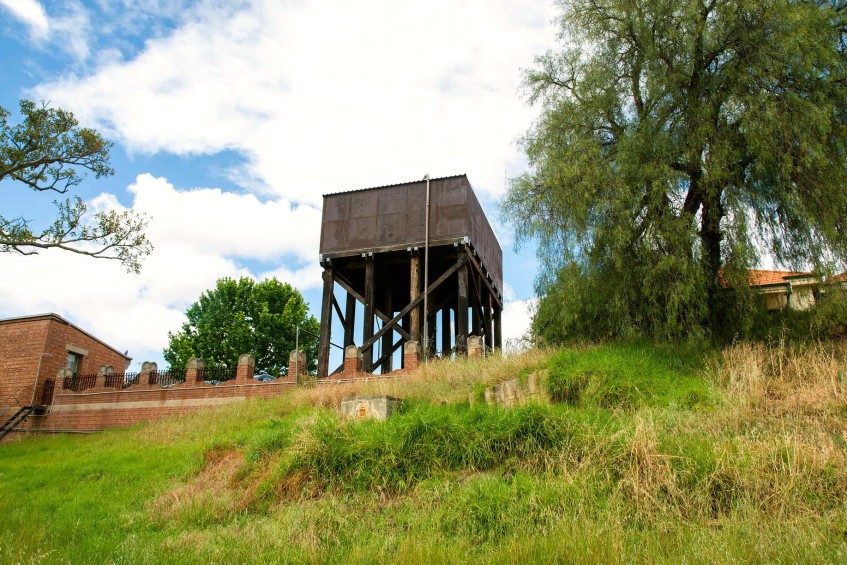
Perched high on the edge of the embankment, the water tower installed by William Padbury has a distinctive lean towards Padbury House, the offices of St Charles Seminary. Photo: Eric Martin.
By Eric Martin
The vast rusty bulk of the old water tower at St Charles’ Seminary, with its heavy timber beams and flaking steel, seems more like something found in an English, Victorian era industrial town rather than the green, overgrown banks of the Swan.
Yet as one rounds the sharp bend past Lilac Hill and passes under the bridge, past the old smuggler’s tunnel that led to the Rose and Crown Hotel and up to ‘Garden Hill’ site of the Seminary, the industrial mass of the water tower, with its pronounced lean, is inescapable.
Even though the tower has not been in use for some 60 years, its “exceptional significance” to the local environment saw it (as part of the grounds of Garden Hill, including Padbury House) added to the City of Swan’s Heritage List, preserving it for future generations.
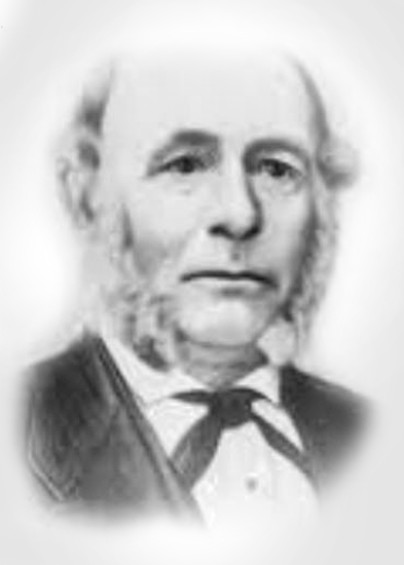
Walter Padbury, an inspirational figure in the Swan River Colony, was responsible for much of the development that occurred not just in Guildford, but throughout WA. Image: Sourced.
Yet after some 100 years of existence, the water tower (built in 1918), with its vast bulk, had developed a distinctive lean and in 2018, the tower became the focus of a concerted restoration effort to maintain its structural integrity – and keep it from coming down on Padbury House, the main building of the Seminary.
“It wasn’t a full restoration so much as a stabilisation of the tower,” said Fr Phillip Fleay, the Rector of St Charles’ Seminary and current custodian of Garden Hill and its water tower.
“If you have a look you can see that the tower has quite a pronounced lean towards the house. Water wasn’t getting away from the foundation – the three major concrete slabs that they put down when they constructed it were starting to sink into the clay.”
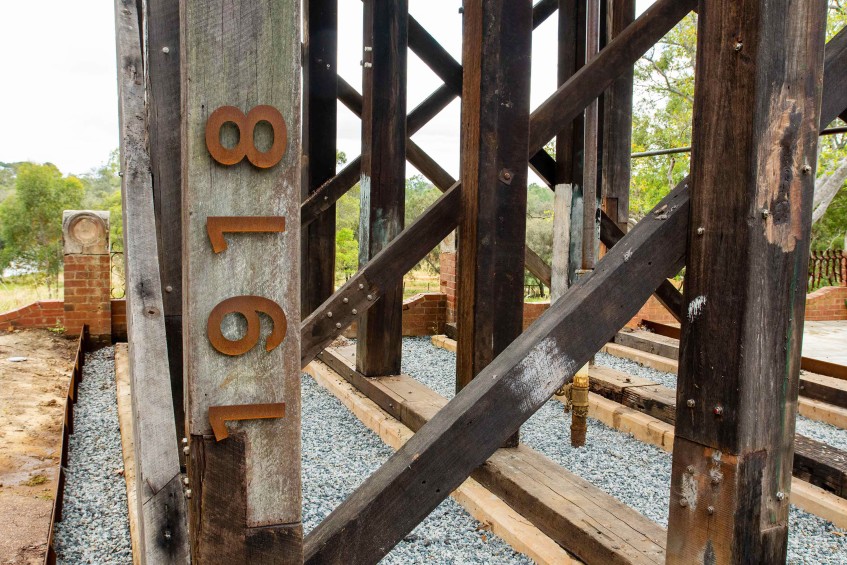
Installed in 1918 by William Padbury, nephew of the famous Walter, the water tower’s solid jarrah pillars sit on three concrete slabs that only required reinforcing some 100 years later, in 2018. Photo: Eric Martin.
Damaged timbers (from white ants and water) were replaced and a special heritage oil applied to preserve the structure and the former laundry building (brick infill within the base of the structure) was demolished, allowing the deteriorated sole plates to be exposed and repaired or replaced.
Ground levels surrounding the Water Tower were reduced and services accommodated underground with blue metal introduced to combat the drainage problems.
Even though the intention of the restoration process was to correct the lean, a condition noted in the building approval stated that the lean needed to be persevered and maintained.
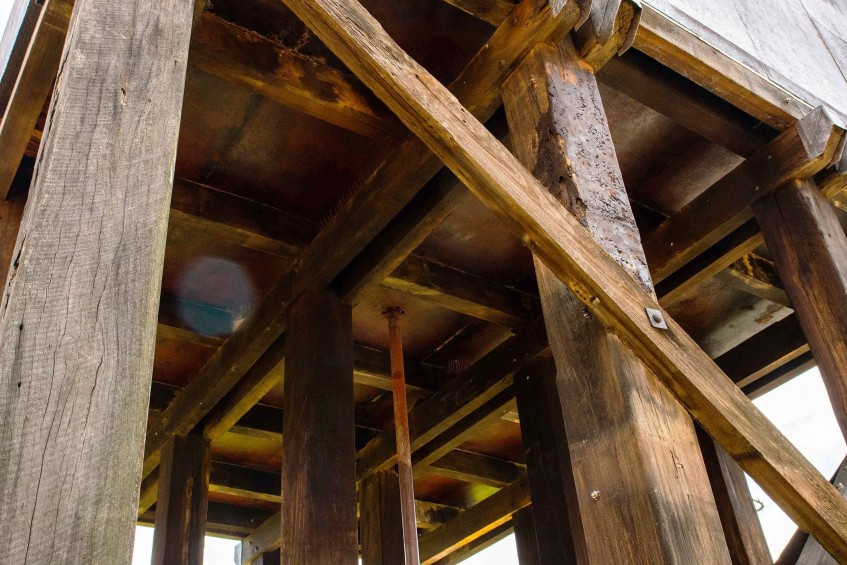
The vast, rusty bulk of the water tower hints at the great weight of the inch-thick steel used in its construction. Photo: Eric Martin.
“The tank itself was cast in 1910 and it’s very, very thick – they didn’t bother to scrape off the rust when it was installed as the rust actually creates a barrier that prevents any further corrosion,” Fr Fleay shared.
The cast iron water tank was manufactured in 1910 by Newton, Chambers & Co Limited, Thorncliffe Iron Works, near Sheffield in the United Kingdom and the original manufacturers face plate is still intact on the tank.
“It used to be supplied by an old flywheel pump, located underneath the stables.
“The groundwater here is filtered by a natural shale that occurs and it’s very, very pure – you may notice that there’s no staining on any of the buildings – and if you dig down deep enough there’s quite sweet water.”
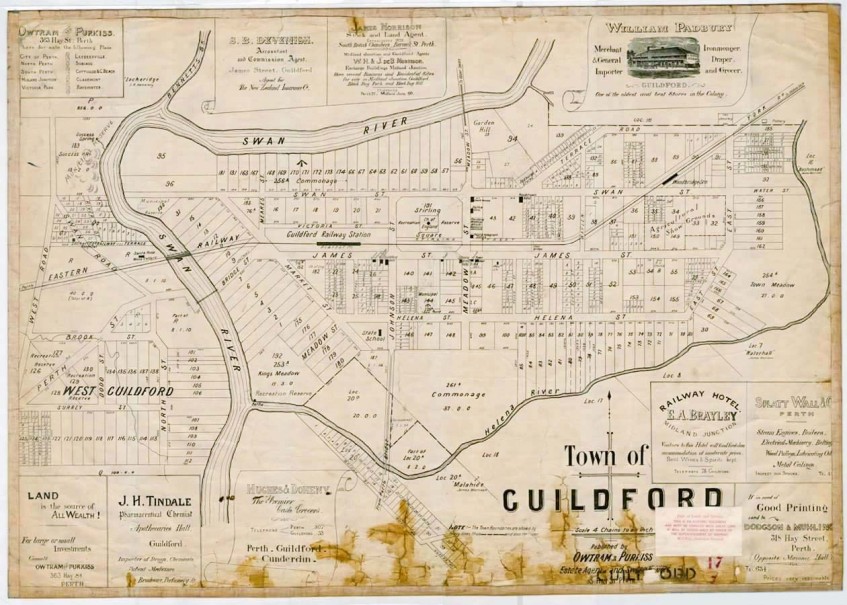
A map of Guildford produced by Walter Padbury, showing the distribution of land in the local area, including Lot 94, Garden Hill. Image: Sourced.
The water tower was still being used in the 1960s according to Fr Fleay, who attended St Charles’ as a seminarian during that period.
“At the end of the year all of the first years had to climb up into the tower and clean it – there were pigeons and rats that lived in the tower – but they used to drink that water, as well as bathe in it.”
During the restoration the tank was cleaned out, capped/sealed, rust and scale gently removed. A coat of fish oil was applied to preserve the metal structure and the existing ladder to access the water tank was also removed for safety purposes.
